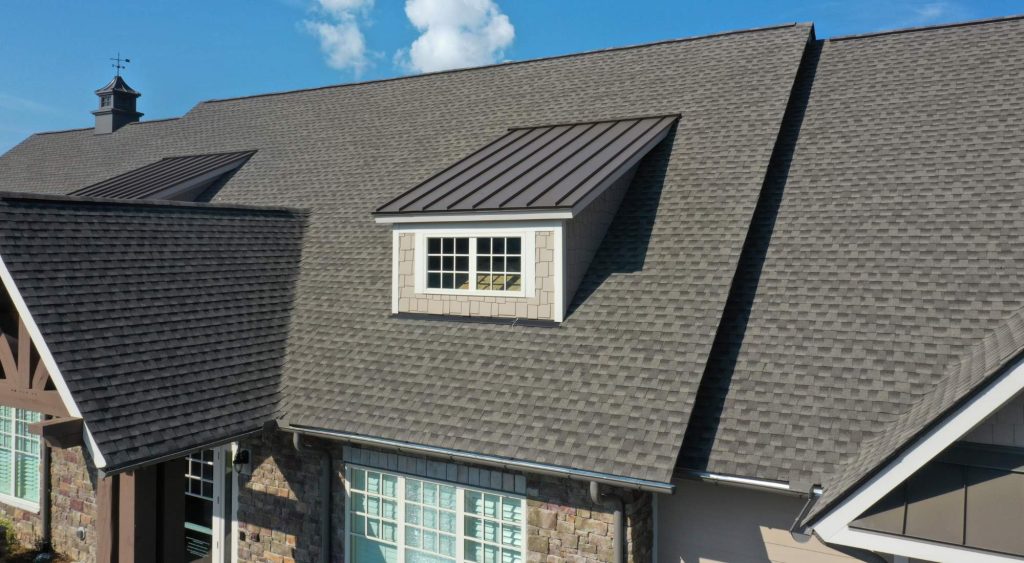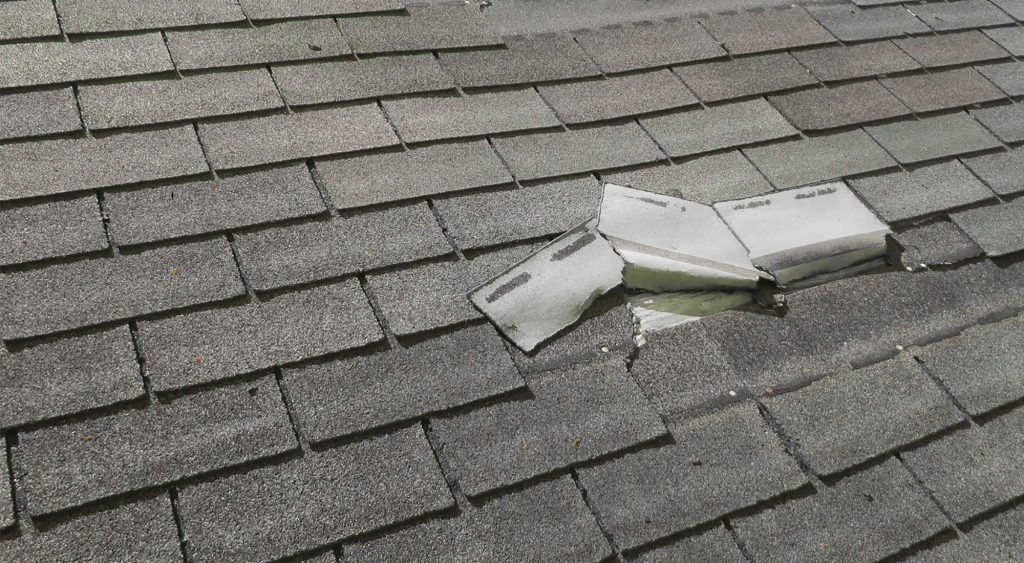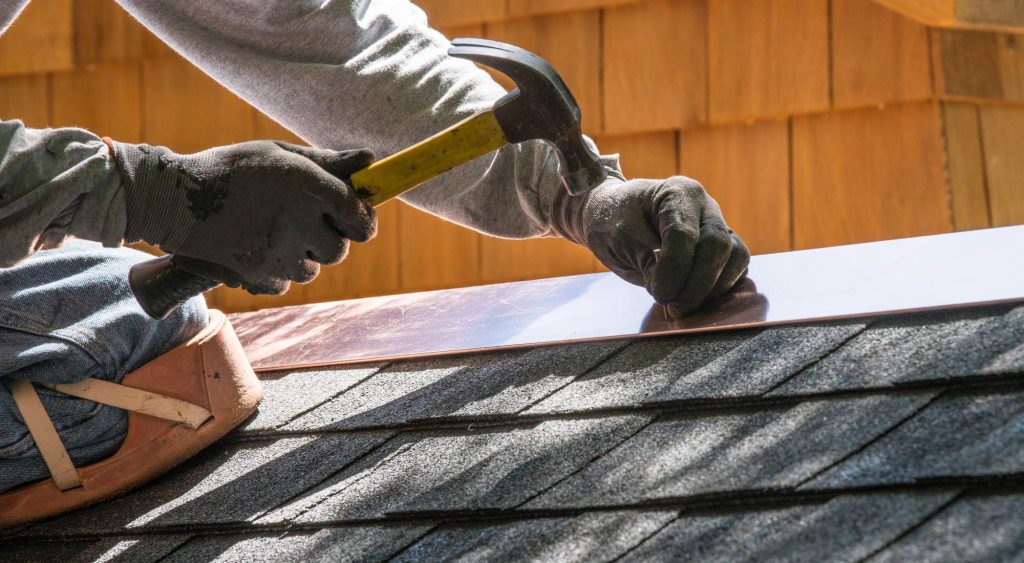A recent storm blew through your area, bringing high winds and a lot of water. Many houses in your neighborhood had roof damage. You’re concerned that your home may be damaged, but you’re not sure how to identify wind roof damage.
Mother Nature is powerful, and wind can be scary. It can also be damaging to your roof. While some damage may be obvious, it can be hard to identify the extent of wind roof damage without a trained eye.
In this article, we’ll delve into how to inspect your home for roof wind damage, indications that your roof may be damaged, and what to do after you find wind roof damage.
Table of Contents
- How Do I Know if My Roof Is Damaged by Wind?
- What Roof Damage Can You Expect From Severe Wind Categories?
- How To Inspect Your Roof for Wind Damage
- 8 Signs That Indicate Wind Roof Damage
- What To Do After You Identify Wind Roof Damage
- Has Wind Damaged Your Roof? Oscar Roofing Will Take Care of Everything
How Do I Know if My Roof Is Damaged by Wind?
While there are signs you can look for visually, a roof damaged by wind may not be obvious. Roof inspections should be left up to the professionals. A roofer will not only have the equipment to safely inspect a roof, but they also have the expert knowledge.
Oscar Roofing is the leading commercial and residential roofing expert in Indianapolis, Bloomington, and surrounding areas. Call us today to schedule a roof inspection. Not only will we perform a thorough inspection and complete necessary repairs, but we will also give you some peace of mind knowing your roof is in great condition.
What Roof Damage Can You Expect From Severe Wind Categories?
Wind speed can be measured in miles per hour (mph) or knots. There is also a commonly used scale called the Beaufort Wind Scale which classifies wind force in 0 to 12 categories. The National Weather Service outlines the Beaufort Wind Scale by visual observations.
So what level of wind should you be concerned about for your roof? Let’s break down roof damage by wind across severity:
- Level 8 (49-46 mph): This gale-force wind can be responsible for breaking smaller branches off trees. You may see some branches on your roof.
- Level 9 (47-54 mph): Considered a severe gale, you can expect some structural roof damage like loose or missing shingles.
- Level 10 (56-63 mph): This wind storm results in trees being uprooted and structural roof damage, including shingles ripped off and tree damage.
- Level 11 (64-72 mph): Known as a violent storm, this results in widespread damage.
- Level 12 (72-82 mph): At a hurricane-force level, you can expect widespread severe roof damage to even commercial buildings.
How To Inspect Your Roof for Wind Damage
After a strong storm with high winds, you’ll want to look for large branches on your roof, missing shingles, or other obvious damage. However, you may or may not be able to see the roof damage from the ground.
You may be able look find some clues of wind damage by looking at other areas of your home and surrounding property including damage to:
- Chimney flashing
- Window flashing
- Gutters
- Attic or top-level
- Outside furniture; and
- Neighbor’s homes
The most comprehensive way to examine your roof for wind damage is to call the professionals.
With over 20 years of experience and expertise, Oscar Roofing knows exactly what to look for after a big storm, leaving no shingle left unturned. Call Oscar Roofing today to schedule a roof inspection.
Beyond storm-related inspections, a routine roof inspection completed by a professional is essential. A regular roof inspection once or twice a year can prevent larger damage during a storm with high winds by addressing small problems early.
8 Signs That Indicate Wind Roof Damage
#1: Missing or Damaged Shingles
One telltale sign of wind damage is missing or damaged shingles. The force and direction of wind can cause shingles to lift, crease, or curl. Shingles can be broken off or lifted completely if the winds become strong enough.
While you may be able to recognize some missing shingles from the ground, a professional roof inspector can examine the integrity of your shingles. Damaged shingles can lead to leaks and need to be repaired.
Flipped/Bent Shingles
A strong wind can cause the nails on your shingles to lift and bend.
While it’s easy to recognize missing shingles by looking around your yard after a big storm or simply looking at your roof, identifying flipped or bent shingles can be a bit more tricky.
You may be able to spot flipped shingles as the wind blows, causing your shingles to move in the wind.
Curling/Lifted Shingles
When shingles have been damaged, they may look lifted or curled. Wind can impact the adhesion of shingles, causing them to curl on the edges or corners where the shingle is most vulnerable.
You may be able to recognize curled shingles by looking at the lines of your shingles. Your shingles should match up in a straight line. Damaged shingles may look uneven or shingles could start overlapping.
Shingles That Flap in the Wind
On blustery days, take advantage of the wind and use it as an opportunity to examine your shingles. Healthy shingles should not lift and should remain firmly in place. Damaged shingles will often lift and flap in the wind, indicating a professional roofing inspection is necessary.
#2: Granule Loss
The granules are a protective coating on asphalt roofing shingles. Granules protect the shingles from harsh UV rays. However, over time or with extreme weather conditions, granules can be worn away.
When your shingles flap during high winds, granular loss can occur. You may notice your shingles looking dull or bare. You may also notice horizontal lines on your shingles. This may be difficult to see from the ground and may need to be examined up close.
#3: Heavy Yard Debris
While objects or large tree branches in your yard are not a sign of damage to the roof itself, it could be an indicator that a flying object may have hit your roof and possibly damaged it.
After a windstorm, look around your yard for shingles or other roofing parts as well as evidence of flying debris. Look at your neighbors’ yards as well.
#4: Divots
Divots or dents in your roof are indicators that there was a forceful impact. This can occur on the metal flashing of the roof or the roof surface itself. High winds can cause flying debris which can cause the divots.
However, other weather elements can cause divots. Hail stands out as the leading culprit of causing divots in roofs. So if the wind storm comes with hail, make sure to pay close attention to your roof for damage.
#5: Cracks or Tears on a Flat Roof
Wind can damage flat roofs by causing cracks or tears. Depending on the force and direction of the wind, it can cause suction and an upward force that can tear a flat roof. These cracks can lead to leaks, so it’s critical to identify the problem early to minimize damage.
If the wind is strong enough, it can create a large opening which can ultimately lead to sections of the roof being torn off.
#6: Interior Water Leakage
Beyond looking at the roof from the exterior, you may have signs inside your home that indicate your roof is damaged by wind. Look at the ceiling of your top floor or your attic for signs of water leaks or water damage.
#7: Damaged Soffit/Fascia
It’s important to examine all components of your roof following a wind storm. The soffit and fascia are important structures of the roof to keep water away from the house.
The soffit is the section under the roof’s overhang. This can be damaged as the wind can lift the soffit, leading to water damage or rotting of the structure due to moisture.
The fascia can also be damaged by wind. The fascia is a board that runs horizontally along the roof’s perimeter and provides support to the roof’s structure. Wind can damage the fascia by cracking or breaking the boards. This impacts the structural integrity of the roof and can also cause water damage to the home.
#8: Missing Flashing
Another critical component of your roof is the flashing. This important element keeps water from infiltrating seams in the roof. Typically made of metal, the flashing is installed along the seal of the chimney, the valley where two slopes meet, the roof’s edges, and other seams in the roofs.
If high winds tear the flashing off the roof, it can cause leakage around the area where it was damaged like the chimney. This can lead to large leaks or even structural damage.
What To Do After You Identify Wind Roof Damage
If you’re reading this and have already spotted wind damage on your roof, you may be thinking, “Now what?” Let’s review the steps to take action.
- Review your homeowner’s insurance policy to find out if the wind damage is covered.
- Contact your insurance company and file a claim.
- Contact a trusted and reliable roofing contractor for an inspection.
As trusted Indianapolis and Bloomington Roofing Contractors, Oscar Roofing understands the importance of finding a contractor you can trust. We have experience with working on insurance claims and we are committed to helping you navigate the process smoothly.
Has Wind Damaged Your Roof? Oscar Roofing Will Take Care of Everything
Wind damage and storms in general can be a scary experience. As a homeowner, it can be unsettling to question if wind damaged your roof.
At Oscar Roofing, we understand the apprehension that comes with storms.
From the inspection process to the replacement, Oscar Roofing is here to serve you and give you peace of mind. As members of the local community in Bloomington and Indianapolis, we take our job seriously in supporting our neighbors.
As an Owens Corning Preferred Contractor, you can trust in our expertise and reliability. All of our team members are fully licensed, bonded, and insured. We prioritize and use the highest quality products at a reliable cost.
Contact us today to schedule an inspection.





